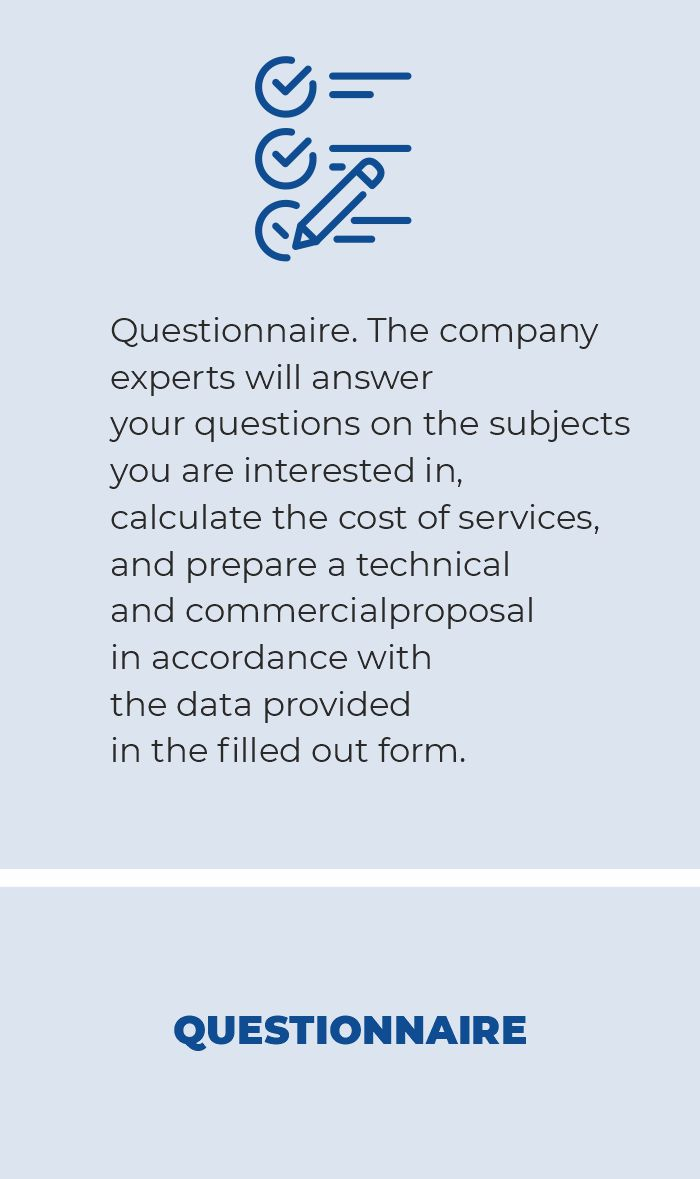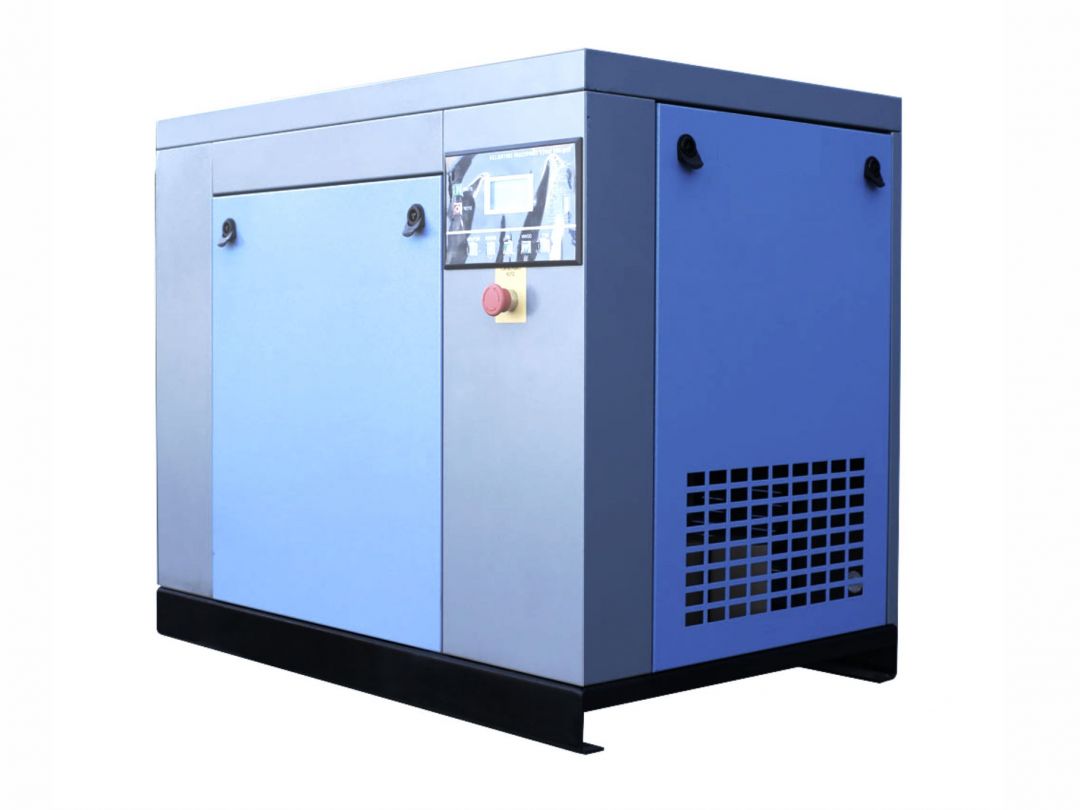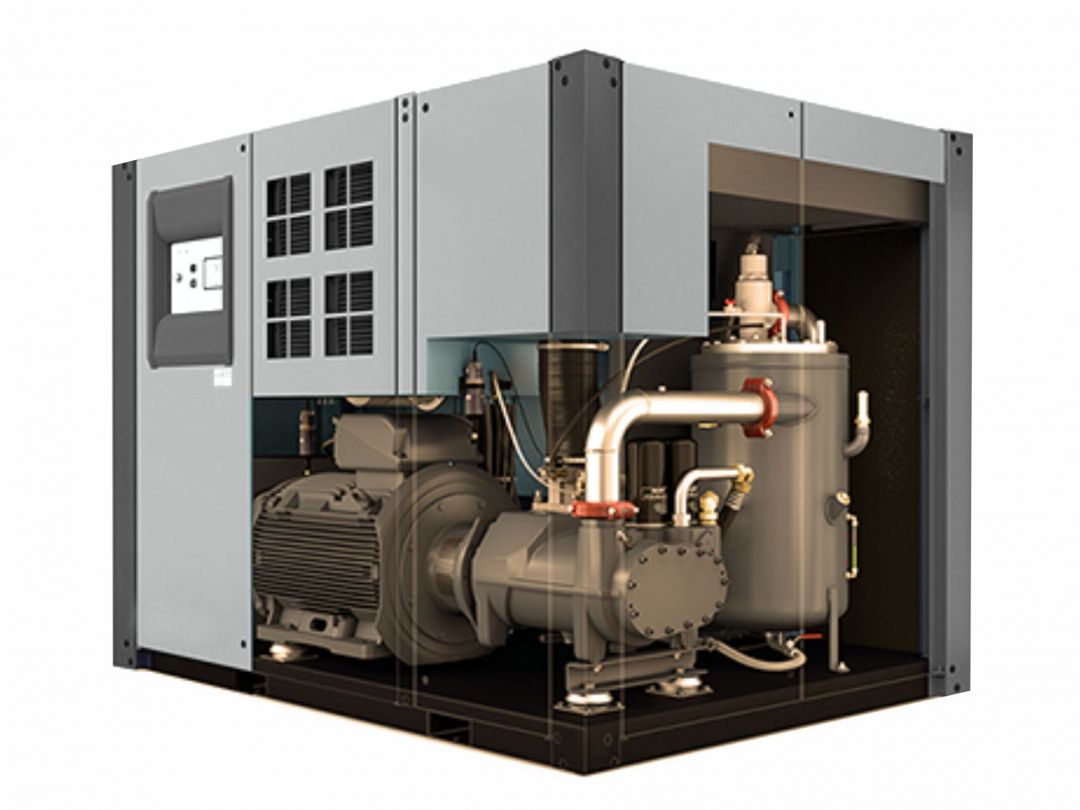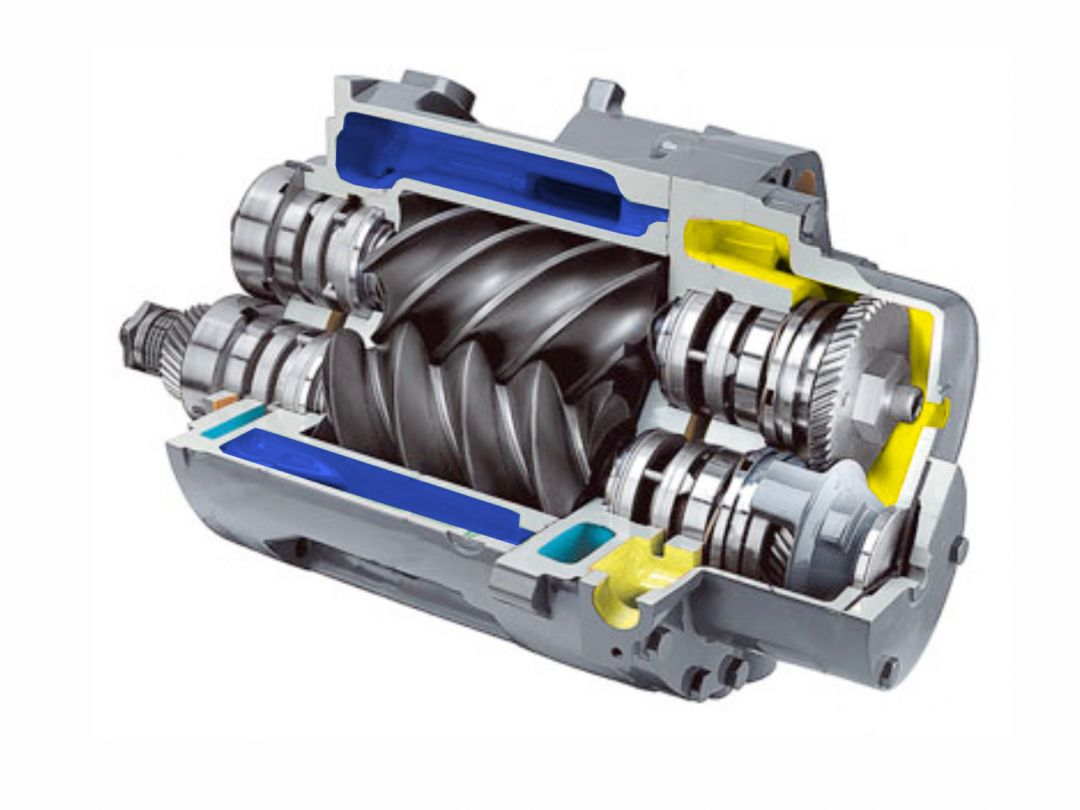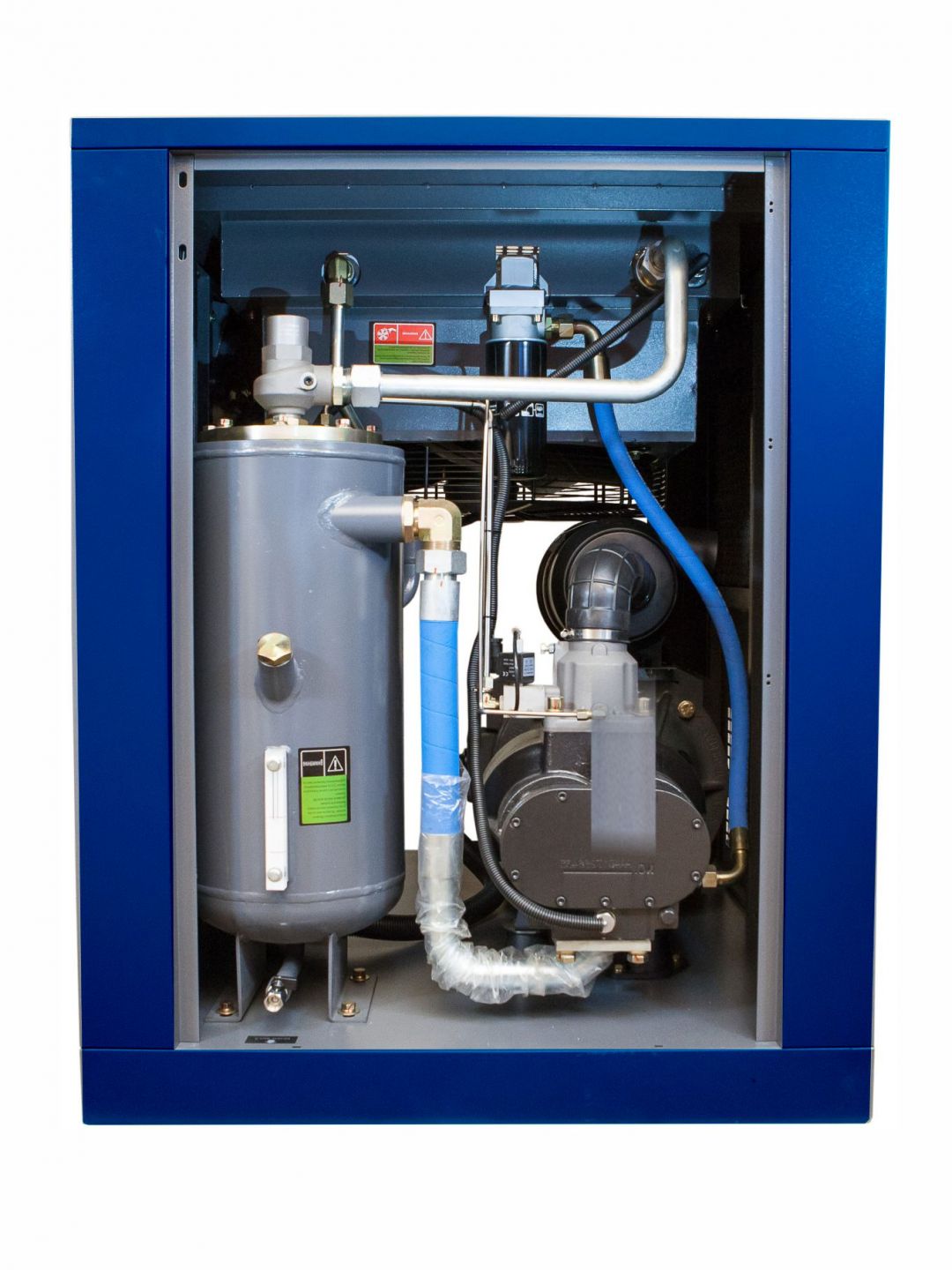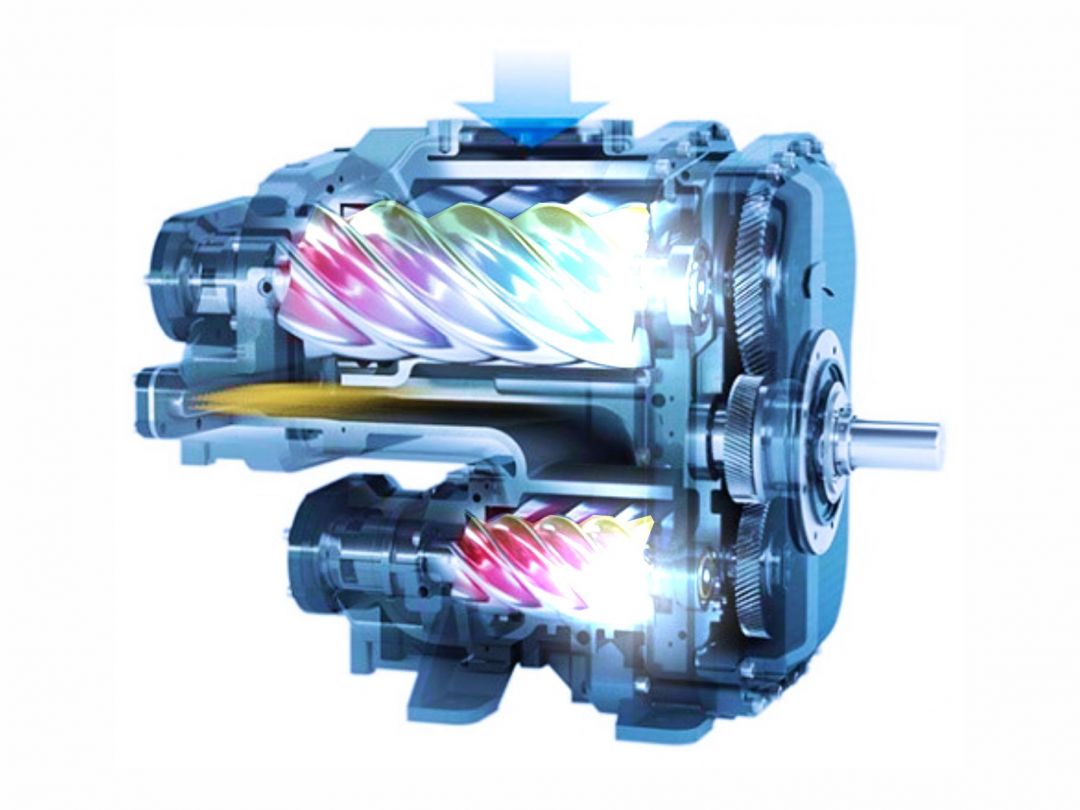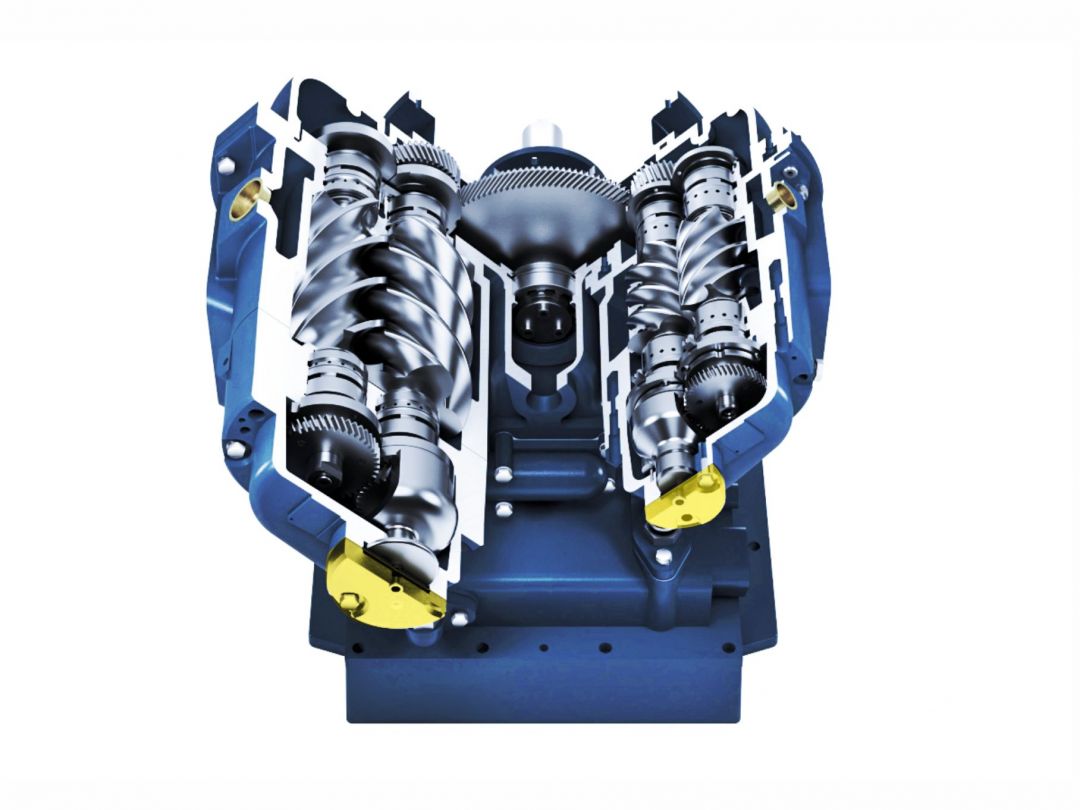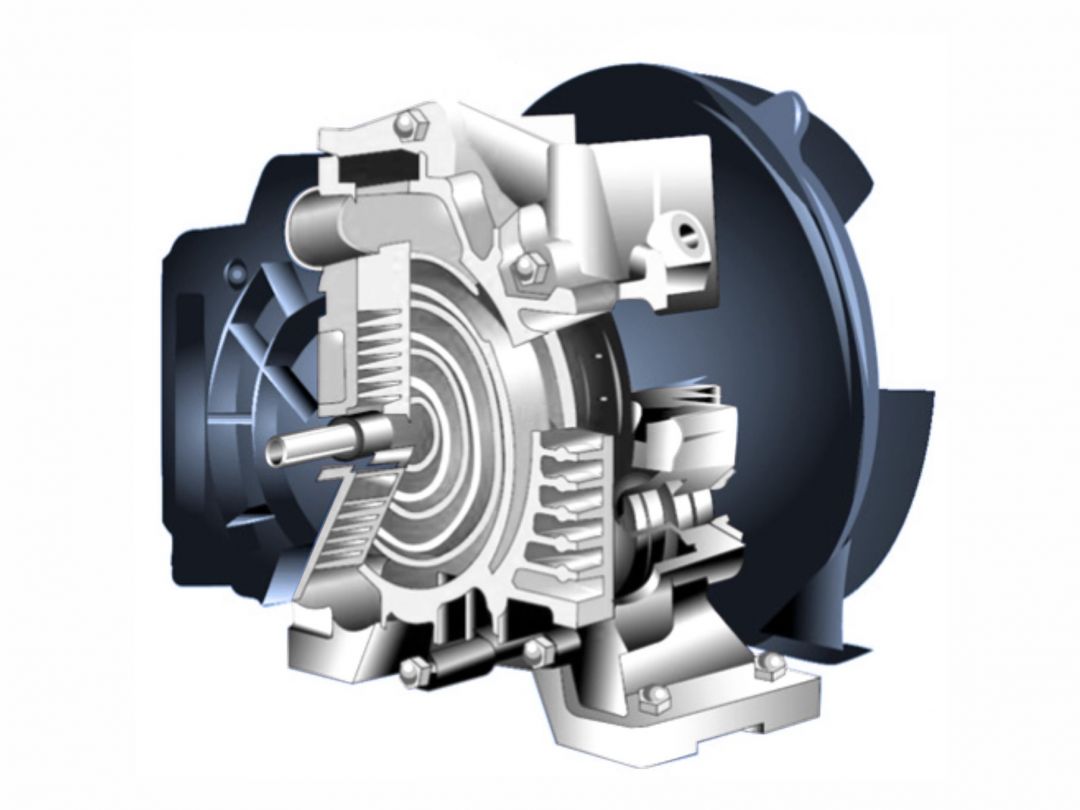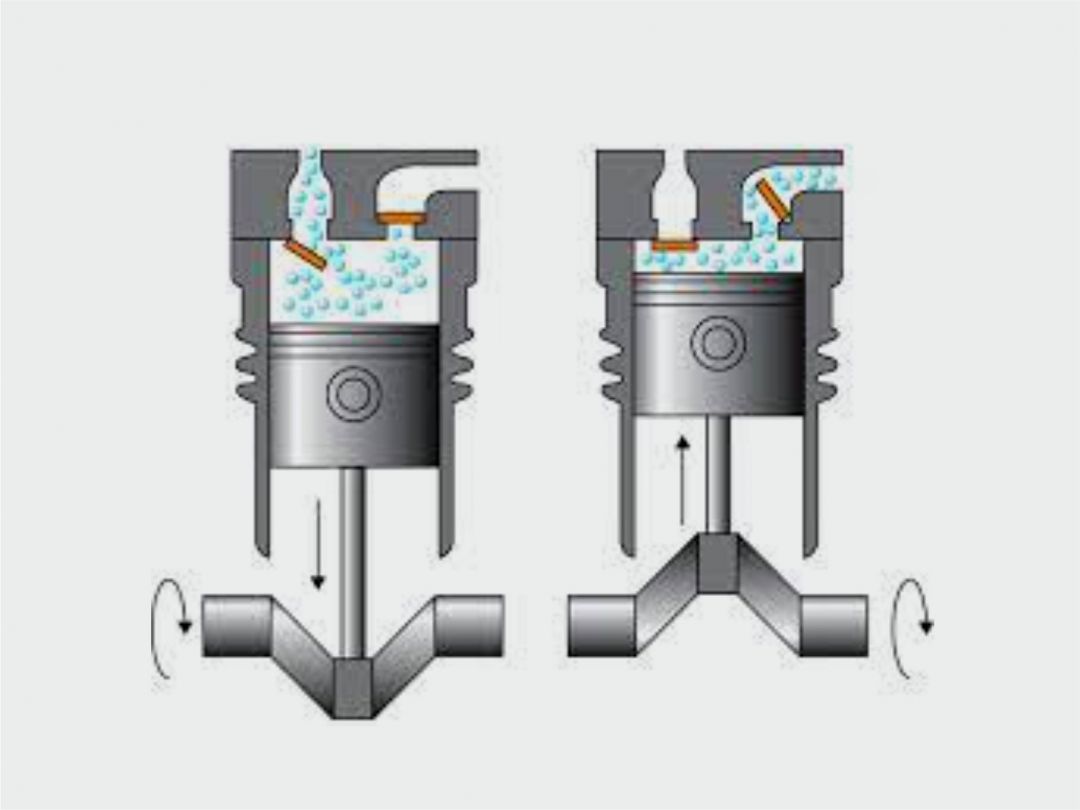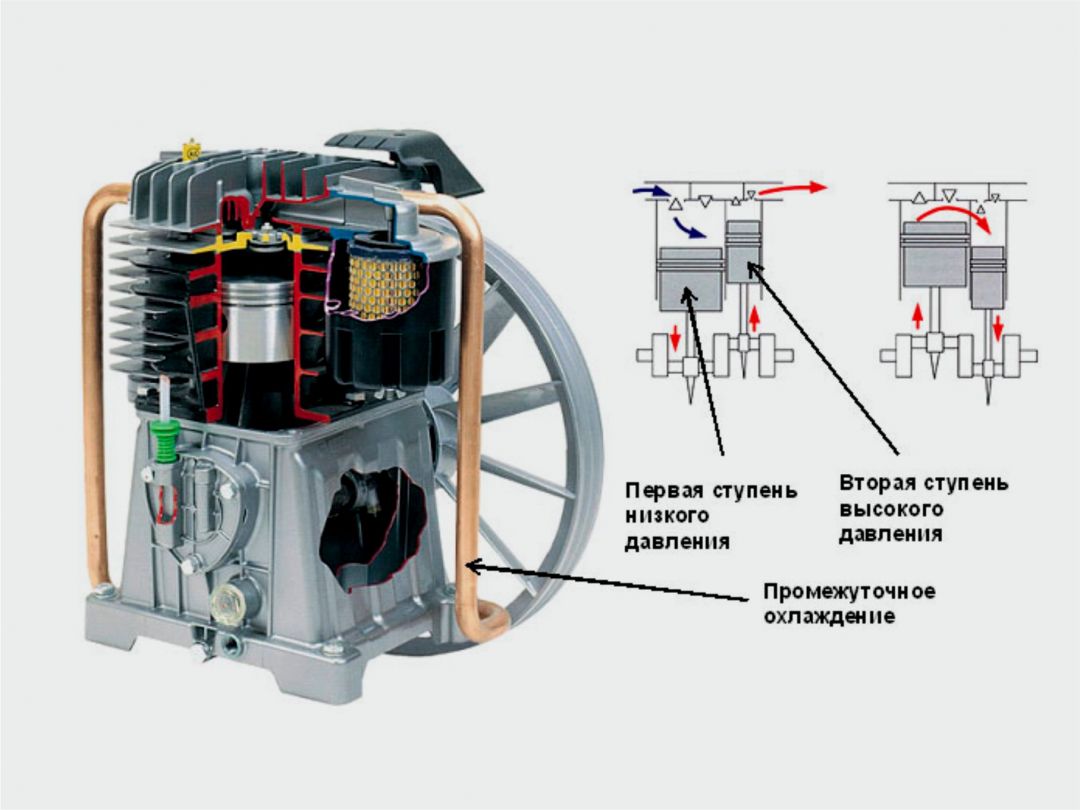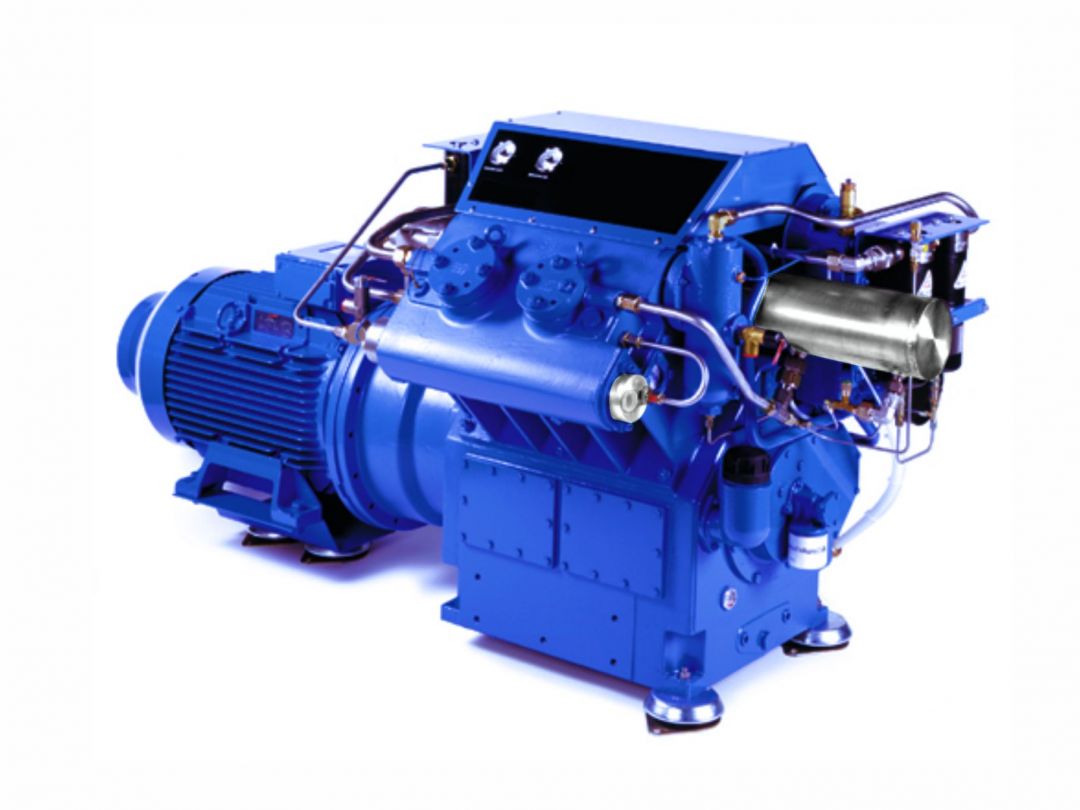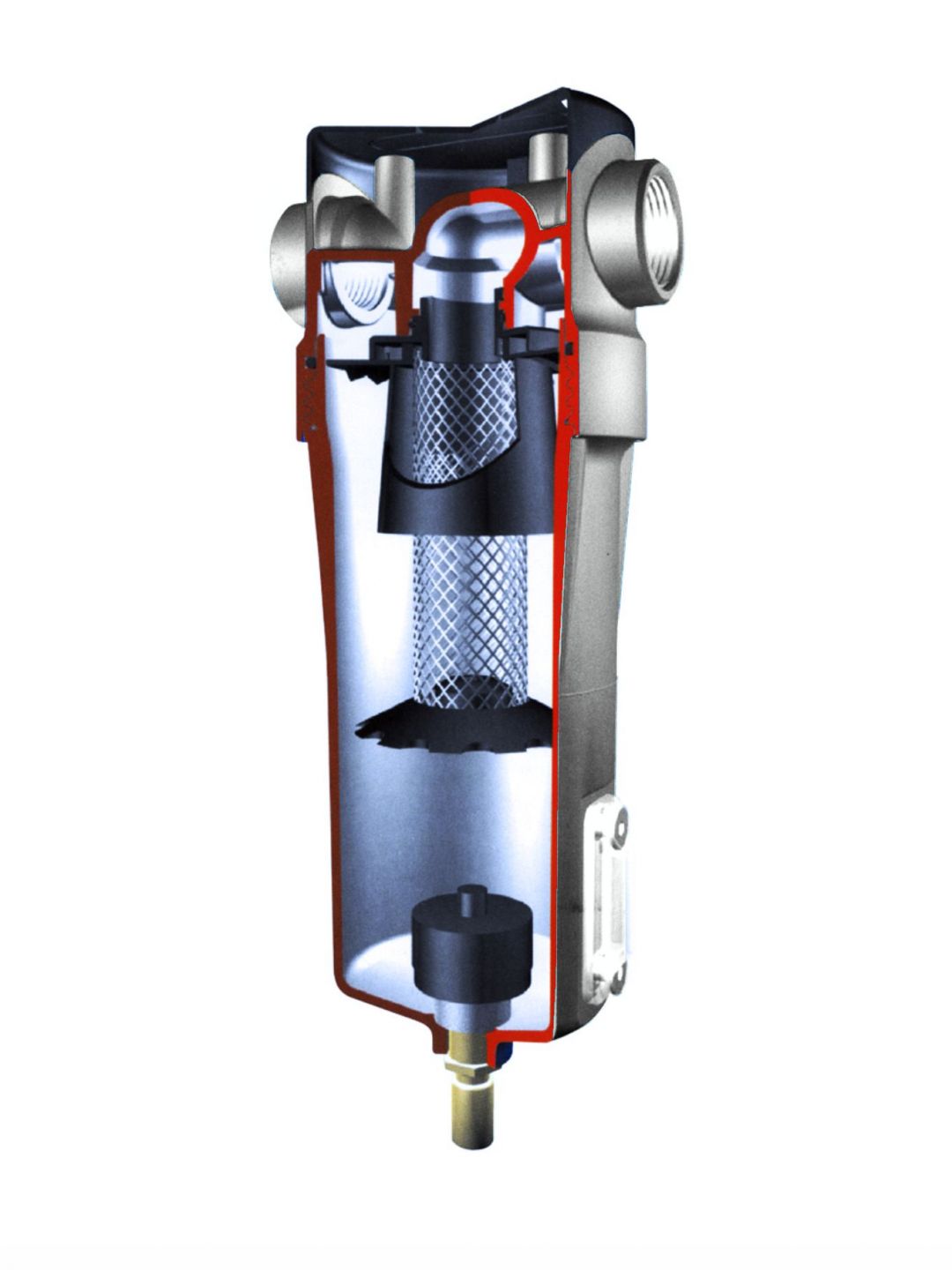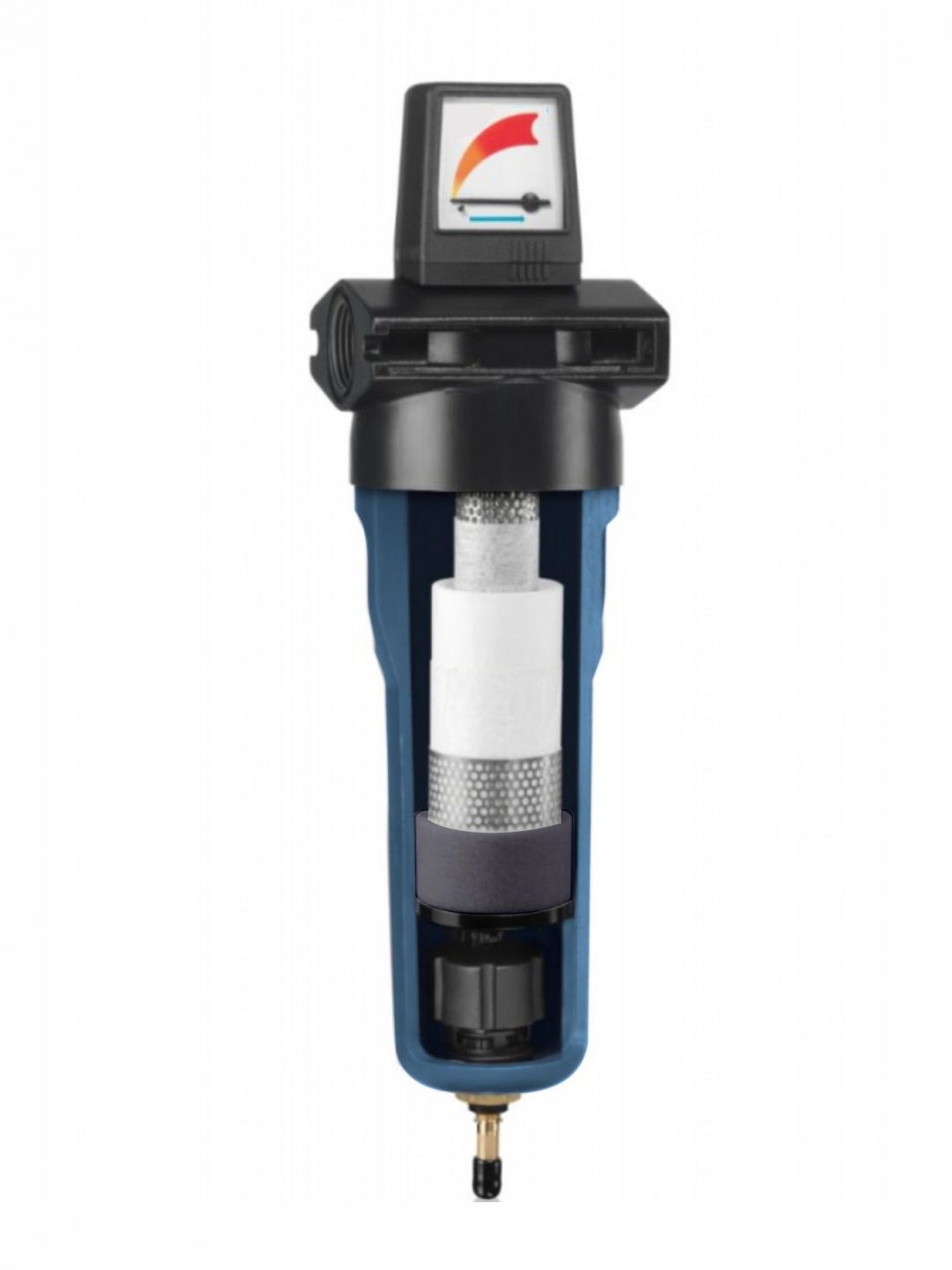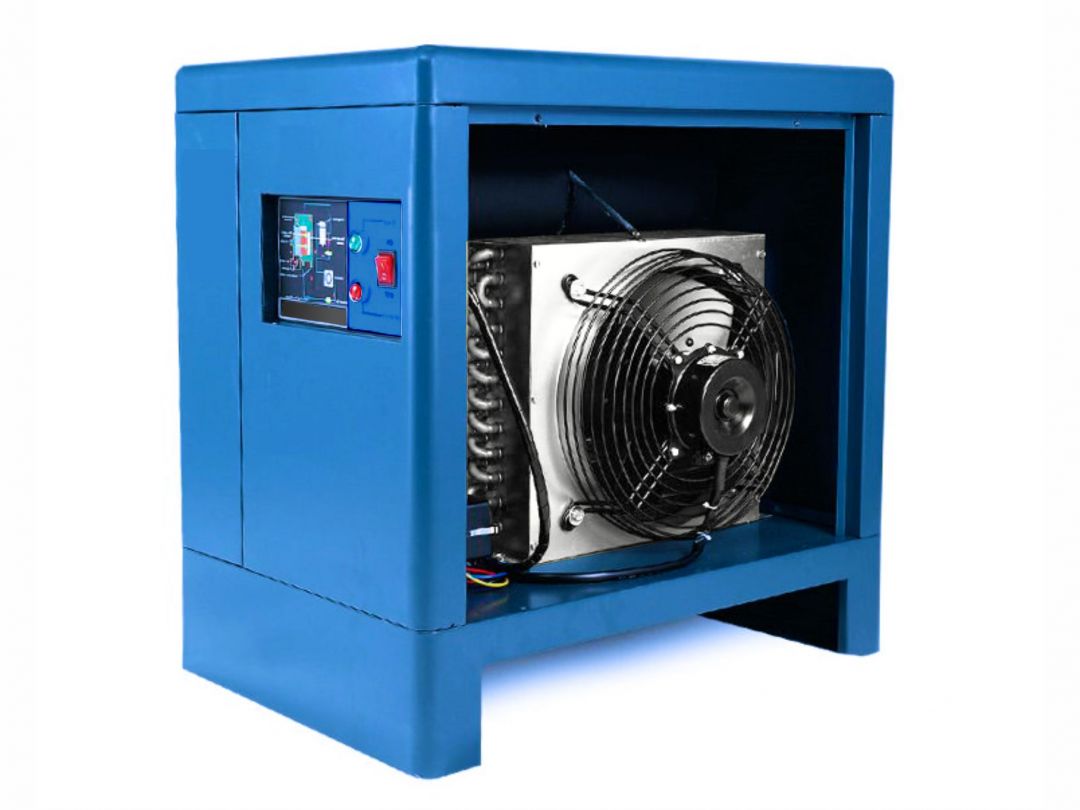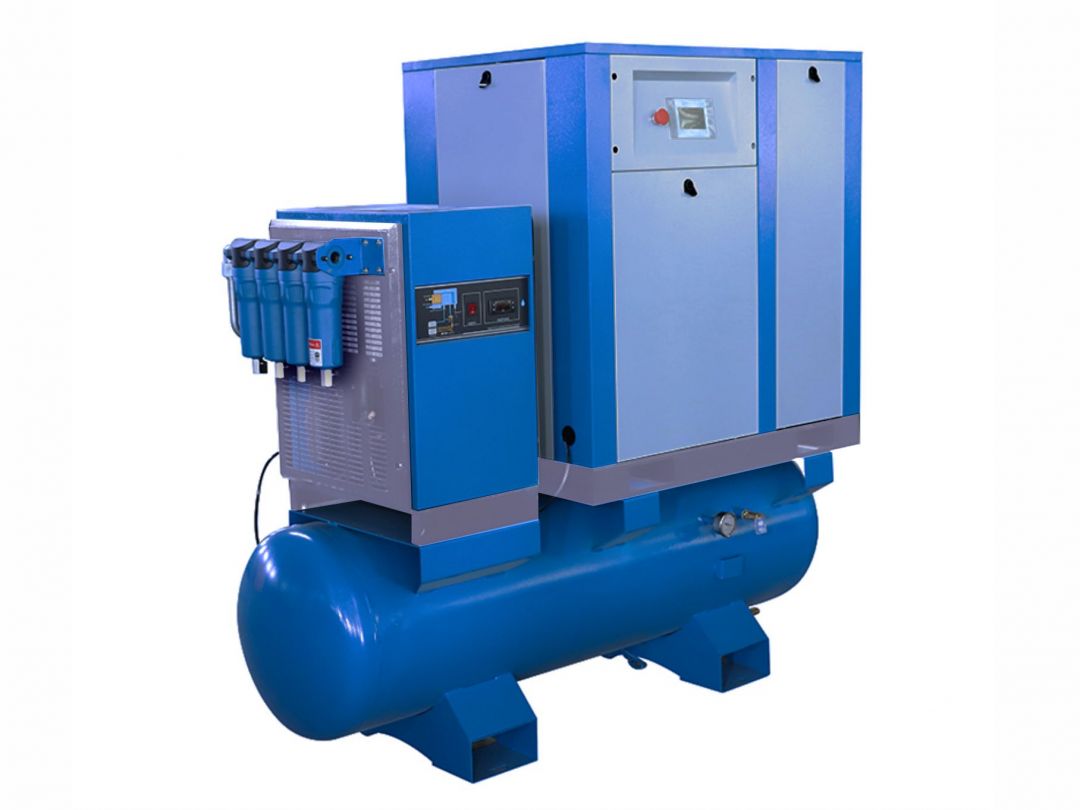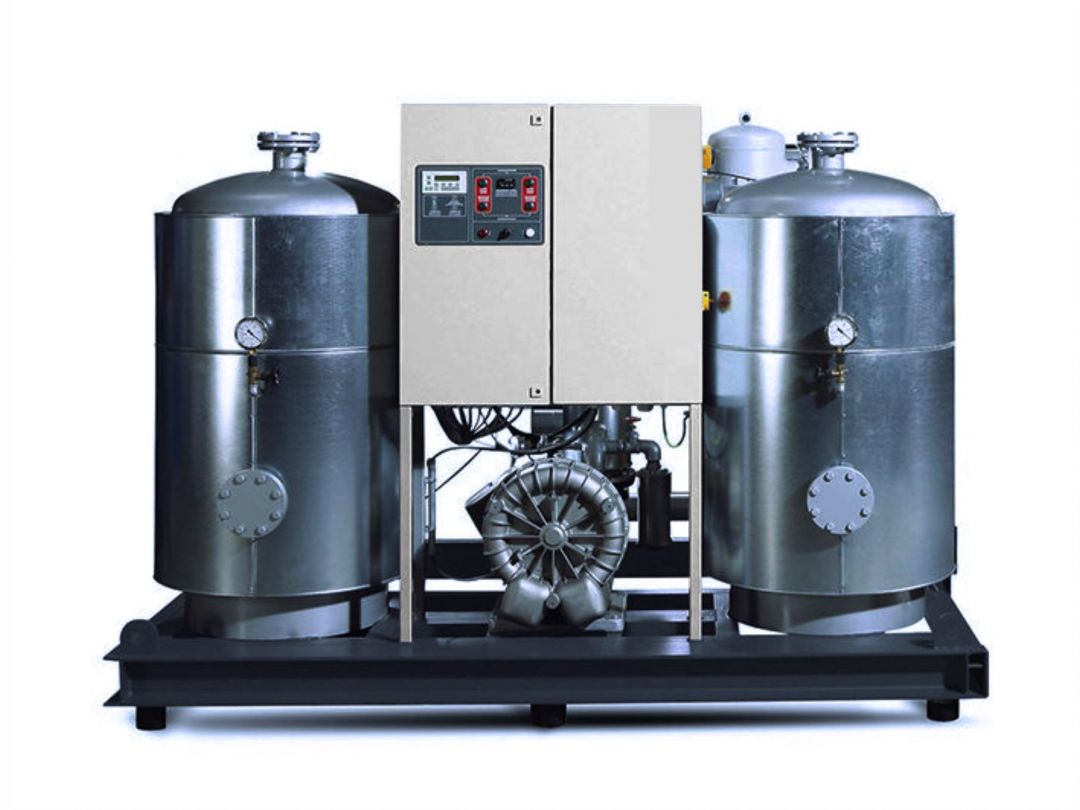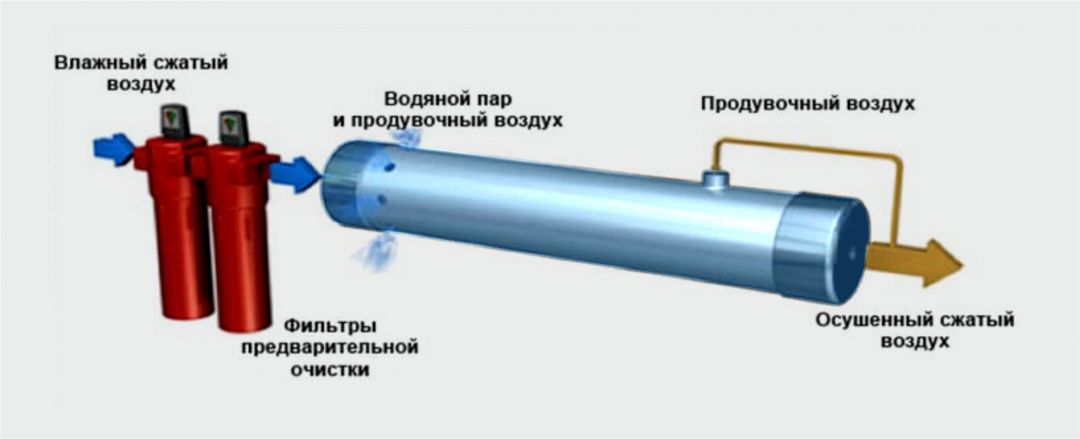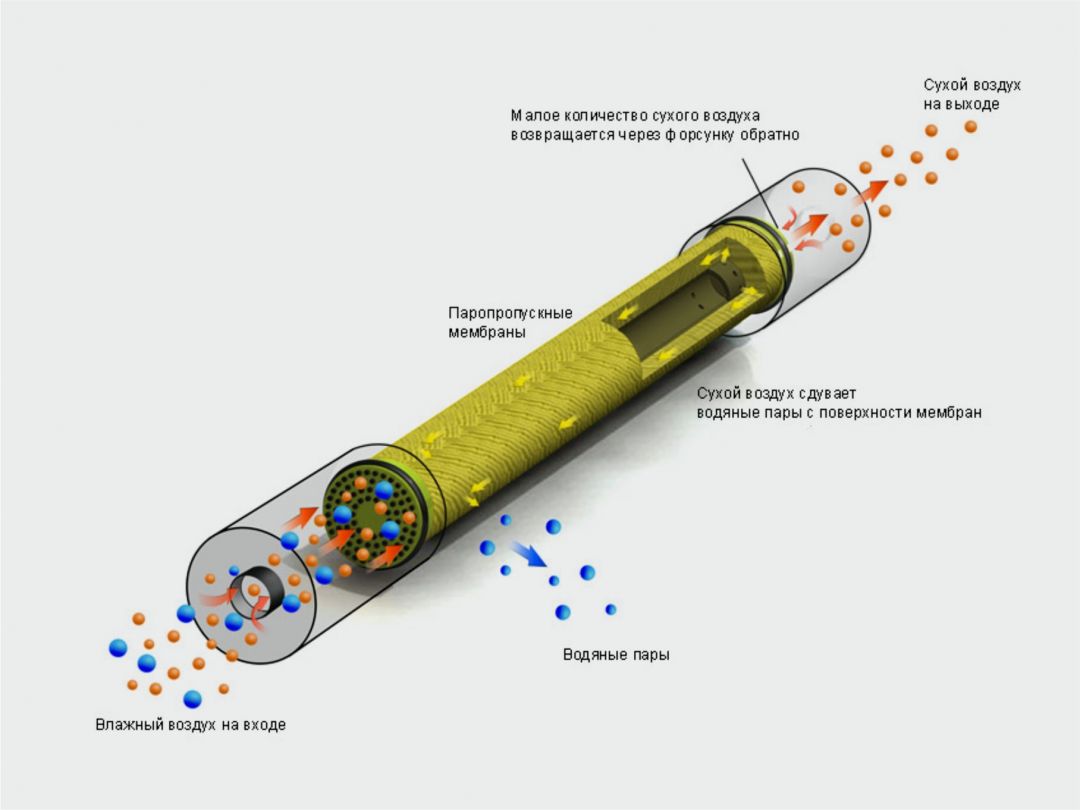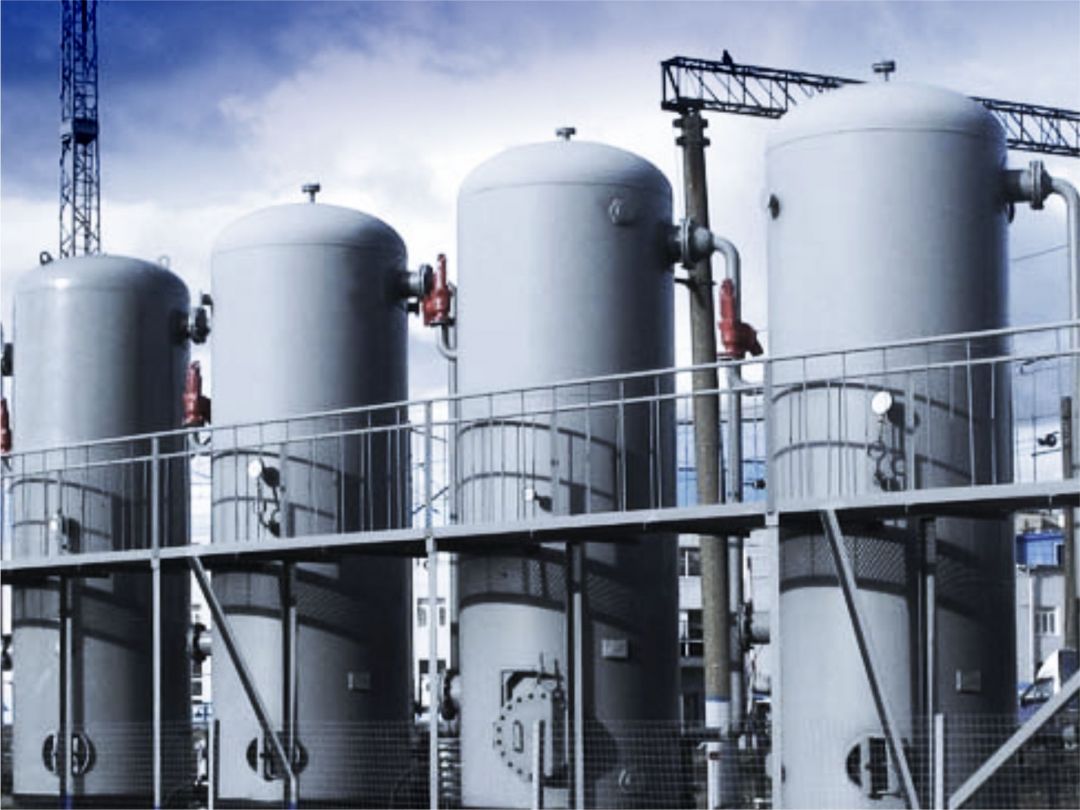Kompressor
Table of contents
A compressor is a technical device that is designed to compress air and gases to a certain pressure (bar) with a required capacity (nm3/min). Compressors are used in many areas of human life.
The following types of air compressors are the most widely used:
- Screws
- Spiral
- Piston
- Boosters
All of these compressors share the same operating principle: changing the volume of the compression cavity.
Screw compressor
Screw compressors are used in technical processes that require a constant, uninterrupted supply of compressed air with a pressure range from 7-40 bar and a capacity from 0.4m3/min to any maximum value, this value is achieved by increasing the number of compressor units.
Types of screw compressors:
Oil-injected screw compressor
- is a compressor in which the air is compressed by rotating the screws and changing the volume of the compression cavity. Oil is injected into the unit to cool and seal the gaps between the screws.
The principle of operation of screw oil compressor: through the suction valve and after cleaning the dust from large particles by air filter, the air enters the compression zone.
The air is compressed by changing the volume of the cavity between the screw pairs during their rotation, oil is supplied to reduce the gaps between them, lubrication and heat dissipation.
The oil-air mixture then passes through a separator where the oil is separated from the compressed air. The separated oil enters the oil cooler for cooling and is cleaned by an oil filter and fed back to the screw unit.
After that, the air passing through the air cooler, cooling to a temperature of +15 degrees from the air temperature at the intake and the minimum pressure valve goes to the consumer.
The power source for rotation of the screw unit shafts is an electric motor or internal combustion engine (in case of mobility or lack of electric power). The connection to the power source is made by means of a belt transmission or a resilient coupling (direct drive).
Advantages:
- High efficiency compared to reciprocating compressors;
- Modern screw compressors are equipped with a microprocessor unit, which makes it possible to automatically control and transmit information about its status;
- Reliable design ensures the possibility of round-the-clock operation;
- Low noise and vibration levels;
- High MTBF with proper maintenance;
- Large selection of manufacturers, which allows you to choose the equipment for any purpose and budget;
- Smooth and smooth performance, no pulsation, therefore no need to retrofit air receivers.
Disadvantages:
- Expensive to purchase initially (compared to reciprocating compressors);
- Expensive to repair main assemblies and units (screw block and electric motor).
High pressure oil-filled screw compressors up to 40 bar.
The principle of operation is the same as that of an oil-injected screw compressor, the screw pair is cooled, lubricated and the gaps are sealed by oil injection.
In order to obtain such a high pressure, a two-stage compression process is required. After passing through the screw unit of the first compression stage, the air enters the cooler and then passes through the second compression stage, reaching a maximum value of 40bar. The air is then cooled by the aftercooler and the compressed air is separated from the oil by means of an integrated separator. The rotation of the two screw pairs is transmitted synchronously by means of a gearbox;
Benefits:
- Reliability as that of a single-stage compression screw compressor;
- High pressure can be achieved with a single piece of equipment, resulting in cheaper installation, piping and maintenance.
Disadvantages:
- The darlings in the original purchase;
- Not a large selection of manufacturers, mainly only well-known foreign manufacturers will be able to offer such equipment;
- The use of a gearbox in the design leads to an increase in cost and overall dimensions.
There are also oil-free screw compressors, they are divided into two types:
- Screw compressor with dry two-stage compression;
- Screw compressor with water injection in the screw unit.
Oil-free screw compressor with two-stage compression
The basic principle is the same as for a conventional double compression oil-injected screw compressor, except that there is no oil injection into the compression chamber for cooling and gap sealing. Since there is no oil in the screw unit, the screw pair must be manufactured to the highest surface finish requirements and the screw spacing must be kept to a minimum. Due to the absence of oil in the compression area, the screw block is heated up considerably during operation, so that a maximum outlet pressure of about 2.5-3 bar can be achieved. Next, the hot air passes through the intercooler, cooling down by about 20 -30 degrees Celsius. After cooling and pre-compression, the air enters the second compression stage, where it is compressed to a pressure of 7-13 bar and heated to a temperature of 140-150 degrees Celsius. Celsius, after the air compressed to the final pressure again enters the pre-cooler, cooling to values +15-20g from the temperature of the air at the suction, before leaving the compressor compressed air passes through a separator, to clean from moisture formed during compression;
The transmission of rotation to the two screw pairs needs to be synchronized, so a gearbox is used. The gears and bearings of the gearbox are lubricated with oil, but the compression chambers are hermetically separated from the gearbox crankcase.
As a rule, such compressors are water cooled. Water is used to cool the screw block housing by means of special ducts and the gearbox housing to cool the oil used to flush the bearings and gears.
Benefits:
- The output is 100% oil-free compressed air for demanding applications;
- Savings on elements of the air treatment system for purification of compressed air from oil vapors;
- Cheaper maintenance due to the absence of oil.
Disadvantages:
- Complexity of design;
- Expensive to buy;
- High thermal loads on the screw block.
Oil-free screw compressor with water injection
The principle of operation is the same as that of an oil-injected screw compressor, except that water is used instead of oil in the compression chamber. These compressors are equipped with a water treatment system that constantly analyzes water quality before it is fed into the screw unit and purifies it using filters and reverse osmosis technology. A separator is installed at the compressed air outlet of the compressor to separate water from air. Some compressors can be connected to a central water supply system. The water level required for normal operation of the compressor is independently controlled.
Advantages:
- The output is 100% oil-free compressed air, which can be used in complex processes;
- Savings on the air treatment system for cleaning compressed air from oil vapors;
- Cheaper maintenance due to the absence of oil;
- The highest reliability rating among oil-free compressors;
- More compact design compared to dry-compression oil-free compressors.
Disadvantages:
- Expensive to purchase;
- The ambient temperature must not fall below zero degrees Celsius;
- Additional maintenance of the air handling system.
Scroll compressor
A scroll compressor is a compressor designed to produce oil-free air, due to the absence of oil in the compression chamber;
Principle of Action:
The compression chamber comprises an orbital movable spiral and a fixed spiral-shaped housing. These elements are aligned to each other and form the compression chamber. During the movement of the movable spiral, relative to the stationary body, the atmospheric air moves from the suction zone to the compression zone. The pressure is increased by a multitude of repetitive cycles that cause continuous suction and discharge.
Преимущества:
- На выходе получается 100% безмасляный сжатый воздух, возможность применение в сложных тех процессах;
- Надежность конструкции за счет небольшого количества подвижных частей;
- Удешевление проведения ТО, за счет отсутствия масла;
- Спиральные компрессора оснащаются микропроцессорным блоком, что дает возможность автоматического управления и передачи информации о его состоянии;
- Небольшие габаритные размеры.
Недостатки:
- Небольшой диапазон по производительности и давлению, в сравнении с винтовыми компрессорами;
- Требуется определенное время на приработку, т.к. производитель заведомо закладывает разную твердость материала у вращающейся и неподвижной части.
Поршневой компрессор
Поршневой компрессор — это компрессор, который служит для сжатия воздуха или газа за счет движение поршня. Энергия для движения поршня поступает от электрического двигателя либо от ДВС. Соединение поршневого блока с источником энергии может быть с помощью прямого привода или с помощью ременной передачи.
Принцип работы поршневого компрессора очень похож на работу ДВС, только открытие/закрытие клапанов происходит за счет разниц между давлениями в камере сжатия и атмосферным за ее пределами. При движении поршня вниз образуется зона разряжение, за счет того, что в зоне разряжения давление ниже чем атмосферное, открывается впускной клапан происходит забор воздуха из атмосферы, выпускной клапан закрыт, при движении поршня вверх, поршень толкает воздух, создавая давление в камере сжатия, впускной клапан закрыт, а выпускной клапан тем временем открывается. Диаметр клапанов рассчитывается, исходя из требуемой производительности и давления. Диаметр впускного клапана не позволит пройти больше воздуху чем это необходимо, а диаметр выпускного клапана обеспечит необходимое сопротивление воздуха на выходе, что создаст давление.
Преимущества:
- Покупка и обслуживание обходится значительно дешевле винтового компрессора;
- Огромный выбор производителей, что позволяет подобрать оборудование под любую цель и бюджет;
- Простота в обслуживании и в ремонте.
Недостатки:
- Конструкция компрессора не предназначена для круглосуточный работы, режим работы 50/50 (работа/отдых);
- Высокий уровень шума и вибраций. При использовании поршневых компрессоров большой мощности, необходимо устанавливать его в отдельном помещении, на прочный бетонный фундамент;
- Низкая производительность, в сравнении с винтовыми компрессорами аналогичной мощности;
- Частый интервал технического обслуживания;
- Пульсация производительности и давления, как следствие, необходимо применение с воздушными ресиверами;
- Низкий КПД в сравнении с винтовыми компрессорами.
При всех преимуществах и недостатках поршневые компрессора нашли широкое применение в различных сферах промышленности. Прежде всего это технические процессы, где не требуется постоянная подача сжатого воздуха при большой производительности.
Поршневые компрессора высокого давления
Принцип работы поршневого компрессора высокого давления, такой же, как и у обычного поршневого компрессора, только сжатие происходит многоступенчатым образом. Воздух сжатый до определенного (начального давления) поступает в следующую ступень сжатия, где он дожимается и так далее, пока не достигнет требуемого давления. Так как воздух при сжатии нагревается, перед подачей в следующую ступень сжатия он проходит через радиатор, для охлаждения.
Также существуют дожимные поршневые компрессора, под воздух и газ, где предварительно сжатая, другим компрессором, до необходимого давления среда, поступает в первую ступень сжатия, из названия становится ясно, что он дожимает уже предварительно сжатую среду.
Чаще всего дожимные компрессора применяются для поднятия давления какого-либо газа (азот/кислород) так как на выходе из генератора (азота/кислорода), газ уже имеет начальное давление.
Преимущества и недостатки поршневого компрессора высокого давления и дожимных поршневых компрессоров:
Преимущества и недостатки такие же, как и у обычных поршневых компрессоров. Основное преимущество — это то, что высокое давление порядка 40мпа можно достичь только таким типом оборудования.
Air treatment system
When using any type of compressor equipment, in the process of air compression, condensate is released, which consists of water and oil, due to the fact that the surrounding air has a certain humidity and a suspension of dust and oil particles. The concentration of these contaminants is in a large volume, which at atmospheric pressure is not visible to the eye. When the compressor compresses the air to a pressure of, for example, 8 bar, the volume of air is compressed eight times, but the concentration of substances in the air remains the same, which is why condensation occurs. In order to prevent condensate from entering the pneumatic network and damaging the equipment, it must be removed in time. For this purpose, an air treatment system is used, which consists of the following equipment:
Compressed air cyclone separator, installed after the compressor through the vibration compensator and before the main filters, in order to separate the main volume of condensate. It is a metal casing with a spiral inside, unattended. Air entering the separator begins to move along the spiral, under the action of centrifugal forces, moisture settles on the inner walls of the housing and flows down. In the lower part of the casing there is a partition, which prevents moisture under the action of air to rise and go into the pneumatic network. All separators have a drain connection for condensate drainage and can be equipped with a manual or electric condensate drain.
Trunk filter set
Магистральные фильтра, служат для очистки сжатого воздуха от различных примесей влаги, масла и твердых частиц. Так же, как и циклонный сепаратор, представляет собой металлический корпус, с фильтрующим элементом внутри. Каждый производитель предлагает свой набор магистральных фильтров, для очистки воздуха класса, согласно ISO 8573. При установке фильтров перед осушителем их также необходимо комплектовать конденсатоотводчиком. Как правило фильтроэлементы служат около 2000 часов наработки, но опционально, степень загрязнения фильтроэлемента можно определить по дифференциальному манометру, который показывает перепад давления до и после него. Чем больше перепад, тем сильнее загрязнен фильтр.
Compressed air dryers
Air dryers are used to dehumidify air to the specified dew point parameters. There are many equipment and compressed air users who have high requirements for the degree of compressed air drying, as moisture in compressed air can damage the main components and lead to increased internal corrosion of the pneumatic line. The main parameters for selecting a dehumidifier are its capacity and the dew point value of the compressed air.
The dew point of compressed air is the temperature at which moisture in the air condenses to form water.
Types of dehumidifiers:
Refrigerated dryer
The basic principle of operation is to cool the air and release condensate from it. Refrigeration dehumidifiers consist of two heat exchangers, air-to-air, air-to-coolant. The air, passing sequentially through each heat exchanger is cooled, releasing condensate. Before leaving the dryer it passes through a separator, which is located inside the dryer casing. Dew point values when using a +3 refrigerated dehumidifier.
Benefits:
- No loss of compressed air during drying;
- Compact dimensions, compared to adsorption dehumidifiers, sometimes complete with compressor and air receiver, on a single frame.
- A simple and energy efficient method of dehumidification.
Disadvantages:
- Low degree of compressed air drying (ISO 8573 class 4);
- Dehumidified air can only be used in heated rooms, or only in the summertime.
Cold regeneration adsorption dryer
A dehumidifier whose operation is based on the capture of moisture as it passes through an adsorbent inside the columns.
Principle of operation: The dehumidifier consists of two columns containing adsorbent (silica gel, molecular sieve) and valve trim, which serves for air flow distribution between the columns, the valves are controlled by the controller. Compressed humid air enters one of the columns, passing through the adsorbent, the moisture settles on its surface, after saturation of one of the columns with moisture, the flow is distributed to the second column. The main flow of compressed dehumidified air goes to the consumer, and its certain part goes for regeneration of the first column, which was previously in operation. The part of the dried air that blows through the column is the regeneration loss, depending on the required compressed air dew point values, the loss can reach 20% at dew point -70C0 or 15% at dew point-40C0. The percentage of regeneration losses is based on the dryer capacity. The purge gas is discharged through a silencer. The controller is responsible for regeneration cycles and switching. When using an adsorption dryer, a cyclone separator and line filters must be used to clean the incoming compressed air from oil vapor and particulate matter. The cleaner the compressed air entering the dryer, the longer the adsorbent will last.
Benefits:
- Высокая степень осушения сжатого воздуха (1;2;3 класс по ИСО 8573);
- Простота конструкции;
- Большой ресурс, при правильной эксплуатации.
Disadvantages:
- Low energy efficiency, as there are losses of compressed air for regeneration, which results in the use of increased compressor capacity;
- Large overall dimensions;
- Requires mainline filters to be installed upstream of the dryer inlet.
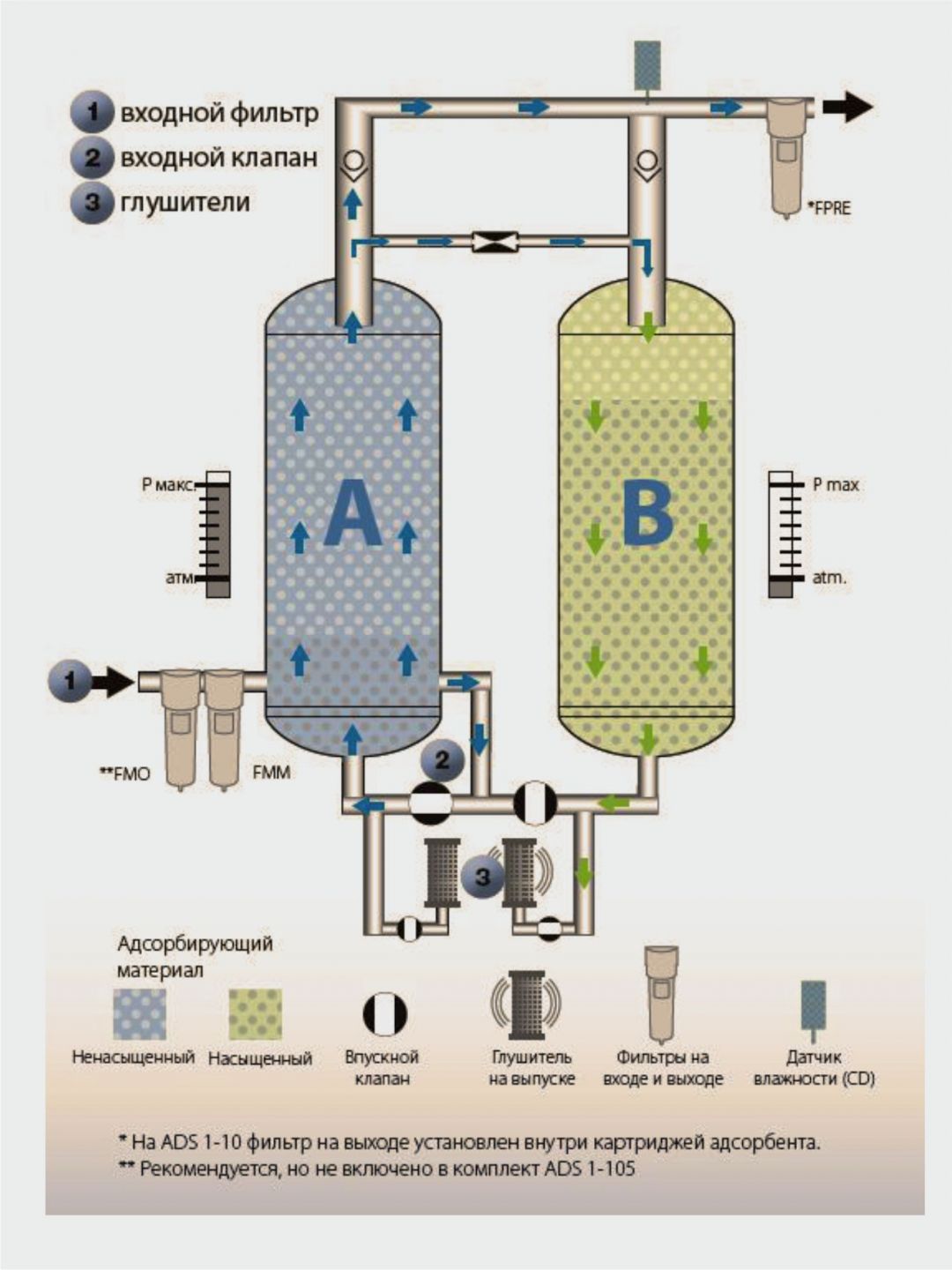
Hot regeneration adsorption dryer
The principle of operation and construction of this dryer is the same as that of a cold regeneration adsorption dryer, the main difference is the method of regeneration. Compressed humid air also passes through one of the columns giving moisture to the adsorbent. Further the compressed dehumidified air goes to the consumer, and its some part, about 5-8% passes through the heater and blows through the previously working column. Due to the fact that in this type of dehumidifier heater is used, the air heated to 130-150C0 effectively dehumidifies the adsorbent, thanks to this it was possible to achieve such low rates of losses.
Benefits:
- High degree of compressed air drying (ISO class 1;2;3);
- Simplicity of design;
- Long service life, if used properly;
- High energy efficiency compared to cold regeneration dehumidifiers.
Disadvantages:
- Large overall dimensions;
- Requires mainline filters to be installed upstream of the dryer inlet;
- Higher purchase cost, compared to cold regeneration adsorption dehumidifiers;
- Additional electrical energy consumption for heating the heating element.
Hot regeneration adsorption dryer without drying losses
The principle of operation and design features are the same as for the hot regeneration dryer, but only in the absence of losses. The regeneration process takes place with heated atmospheric air, which is blown to high temperatures by a blower.
Benefits:
- High energy efficiency, no losses at all
- High degree of compressed air drying (ISO class 1;2;3);
- Long service life, if used properly;
- High energy efficiency compared to cold regeneration dehumidifiers.
Disadvantages:
Membrane dryer
A type of dryer in which moisture is removed from compressed air by separating water molecules from air molecules. The dehumidifier consists of a membrane unit, end covers, inlet and outlet connections, with the possibility of connecting a condensate drain. The membrane unit is a unit with a large number of very small polymer tubes with an inner diameter designed to allow air molecules to pass through and water molecules to be trapped outside the inner surface of the tubes. After dehumidifying the air, a portion of the air is used to purge the outer surface of the tubes of water molecules. Compressed air losses for purging are in the order of 10% of the capacity.
Benefits:
- Small overall dimensions;
- Simple construction and high reliability as there are no moving parts;
- Easy to install and connect, no power supply required;
- High degree of compressed air drying, reaching dew point -40C0 .
Disadvantages:
- Low capacity from 500-2500l/min;
- High demands on the degree of purification of the incoming air.
Capacitive equipment
Tanks are metal containers for collecting, storing air or gas under pressure and its further delivery to the consumer. They are used to equalize pressure and consumption pulsations when screw and reciprocating compressors are operating.
The main parameters of tank equipment (receivers/air collectors) are the volume required to store the compressed medium, pressure and temperature performance. All tank equipment is equipped with a pressure gauge to monitor the pressure inside and a safety valve to release excessive pressure.
Core Functions:
- Accumulation of compressed air or gas;
- Smoothing of compressed air or gas pulsations during compressor operation;
- Condensate collection. (in this case compressor and receiver should be installed remotely from each other, it is necessary for the air passing through the pneumatic network to cool down, releasing condensate).
Note:
* Excerpt from "Rules of device and safe operation of pressure vessels", M, 1996 Approved by the resolution of Gosgortechnadzor of Russia from 18.04.95. Page 85 6.2.2. Registration in the bodies of Gosgortechnadzor of Russia are not subject to: vessels of the 1st group, operating at a wall temperature not exceeding 200 ° C, which, the product of pressure in MPa (kgf / cm2) per capacity in m3 (liters) does not exceed 0.05 (500), as well as vessels of the 2nd, 3rd, 4th groups *, operating at the above temperature, which the product of pressure in MPa (kgf / cm2) per capacity in m3 (liters) does not exceed 1.0 (10000).
© MKC Group of Companies LLC, 2022
 ru
ru en
en
